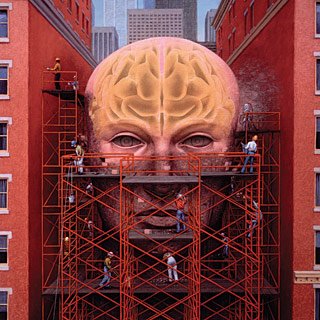
Ok folks, question...
What would your answer be if a close friend asked, “where do you think you’ll be five years from now?” I would venture to say that your answer would be “I have no idea.”
None of us are fortune-tellers. We have no idea what’s going to happen to us when we reach the end of a hallway and turn the corner, let alone tomorrow, next week, or even next month.
Friends, the future cannot be scripted. Your ability to be on top of the game in the near or distant future will be determined by your company's ability to manage unpredictability happening right now. So the question becomes: is your organization designed to react in real time?
My good friend Mike Bonifer believes in the improvised brand narrative. The concept that, in a highly matrixed communications environment, brand narratives cannot be scripted, they must be improvised in collaboration with the brand's audience (i.e. its stakeholders and customers). I truly believe in this too, as it reflects one of our own core principles that we live by: when on the verge, persist and surrender.
Everyday we’re on the verge…of new ideas, new opportunities, or new potential. Being persistent with your goals is key to success. In order to succeed, though, you have to surrender to what you can’t control. This is improvisation. Act and react. Persist and surrender. Be agile, fluid and savvy in a world where we do not know what will be encountered around the next bend.
For example…
In 2009, three years after I founded my company, it would soon cease to be called Vosica. In April of last year we organized a highly successful mini conference here in DC. with the theme being Convergence. Attendees really embraced the theme and got a lot out of the event. Afterwards many of my colleagues, (whom opinions I highly respected) and a few sharp event participants, really thought the theme reflected the nature and work of what we were doing and suggested that we re-brand the company (the last thing I thought about doing). After a few days of some heart to heart conversations and some serious contemplation, it became official. The company would be re-branded and called Cnvrgnc. Totally unplanned and unscripted we embraced valuable interplay between our brand and our community. .
Twitter knows improvisation as well, too.
In a recent ad age article Simon Dumenco makes some excellent points about the evolution of twitter. He discusses how the social networking platform has gone from a site concerned mainly with "what are you doing?" (banal self absorption) to a new kind of identity. Their new tagline is “The best way to discover what’s new in your world.” This didn’t happen because of what founders Biz Stone, Evan Williams and Jack Dorsey strategically set out to do, but because twitter users decided how they wanted to make tweets work for them. They customized twitter for their use and in an unplanned and organic way, took over product development. What better example can you have of how to persist and surrender? Pursue your idea, but surrender to another way should the market show you a better direction.
Not knowing what is going to happen tomorrow has always been a reality. But the deterioration of typical marketing strategies and traditional business models and the current ambiguity pervasive in today's market, is something entirely new.
Ladies and gents, businesses and brands, in today's market, ambiguity is your concierge. Improvisation is critical. How to persist and surrender will be and art worth learning.
The quicker it's understood that the scripts of the industrial age having less and less sway, the quicker you can begin adapting to the new rules of the 21st century.
 Friday, December 3, 2010 at 8:44AM
Friday, December 3, 2010 at 8:44AM 



